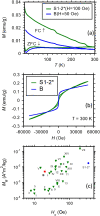Mud and burnt Roman bricks from Romula
- PMID: 36151128
- PMCID: PMC9508116
- DOI: 10.1038/s41598-022-19427-7
Mud and burnt Roman bricks from Romula
Abstract
Sesquipedalian mud and burnt bricks (second to third century AD) were excavated from the Roman city of Romula located in the Lower Danube Region (Olt county, Romania). Along with local soils, bricks are investigated by petrographic analysis, X-ray fluorescence (XRF), X-ray diffraction (XRD), Fourier transformed infrared spectroscopy (FT-IR), electron microscopy (SEM/EDX), X-ray microtomography (XRT), thermal analysis (DTA-TG), Mӧssbauer spectroscopy, magnetometry, colorimetry, and mechanical properties assessment. The results correlate well with each other, being useful for conservation/restoration purposes and as reference data for other ceramic materials. Remarkably, our analysis and comparison with literature data indicate possible control and wise optimization by the ancient brickmakers through the recipe, design (size, shape, and micro/macrostructure), and technology of the desired physical-chemical-mechanical properties. We discuss the Roman bricks as materials that can adapt to external factors, similar, to some extent, to modern "smart" or "intelligent" materials. These features can explain their outstanding durability to changes of weather/climate and mechanical load.
© 2022. The Author(s).
Conflict of interest statement
The authors declare no competing interests.
Figures














References
-
- Davey, N. A History of Building Materials. Chap. 3. 19–25 (Phoenix House, 1961).
-
- Wright G. Ancient building technology. Technol. Change Hist. 2005;1:111–139.
-
- Tudor D. Oltenia romană. Editura Acad. Repub. Soc. 1978;4:189.
-
- Tătulea, M. Romula-Malva. in Editura Museion. 52–53 (1994).
-
- Popilian G. Ceramica romană din Oltenia. Scrisul Romanesc. 1976;8-10:139–156.
Publication types
MeSH terms
Substances
LinkOut - more resources
Full Text Sources
Miscellaneous

